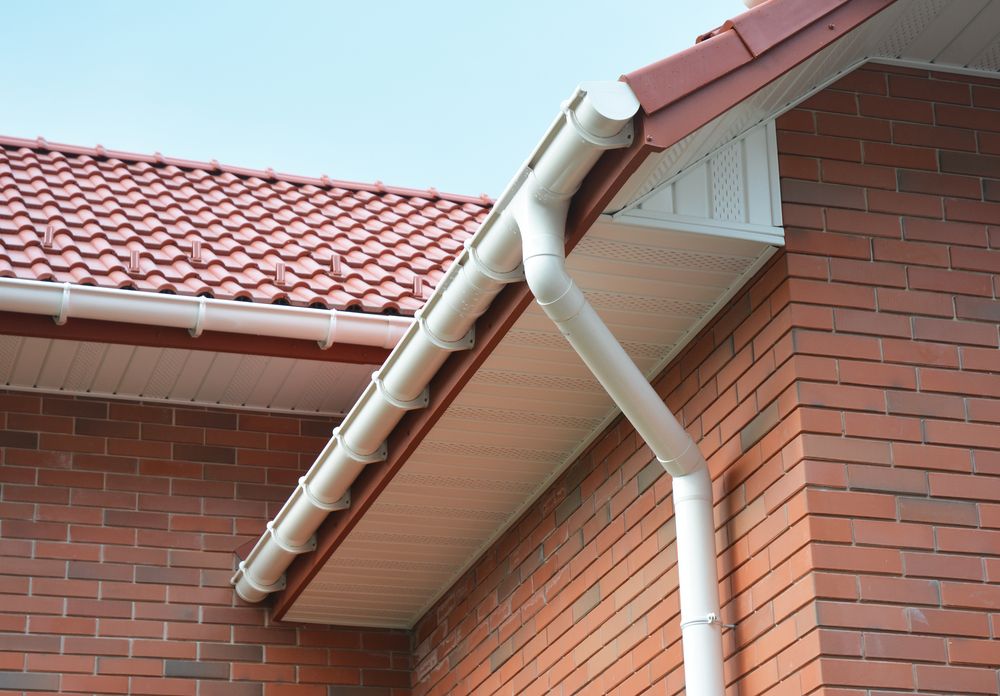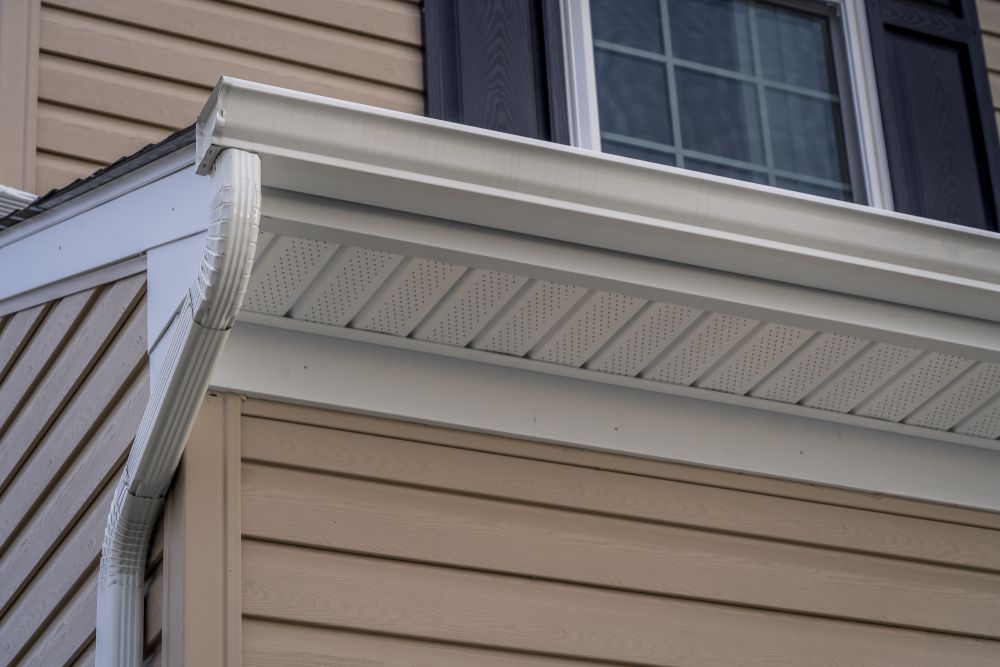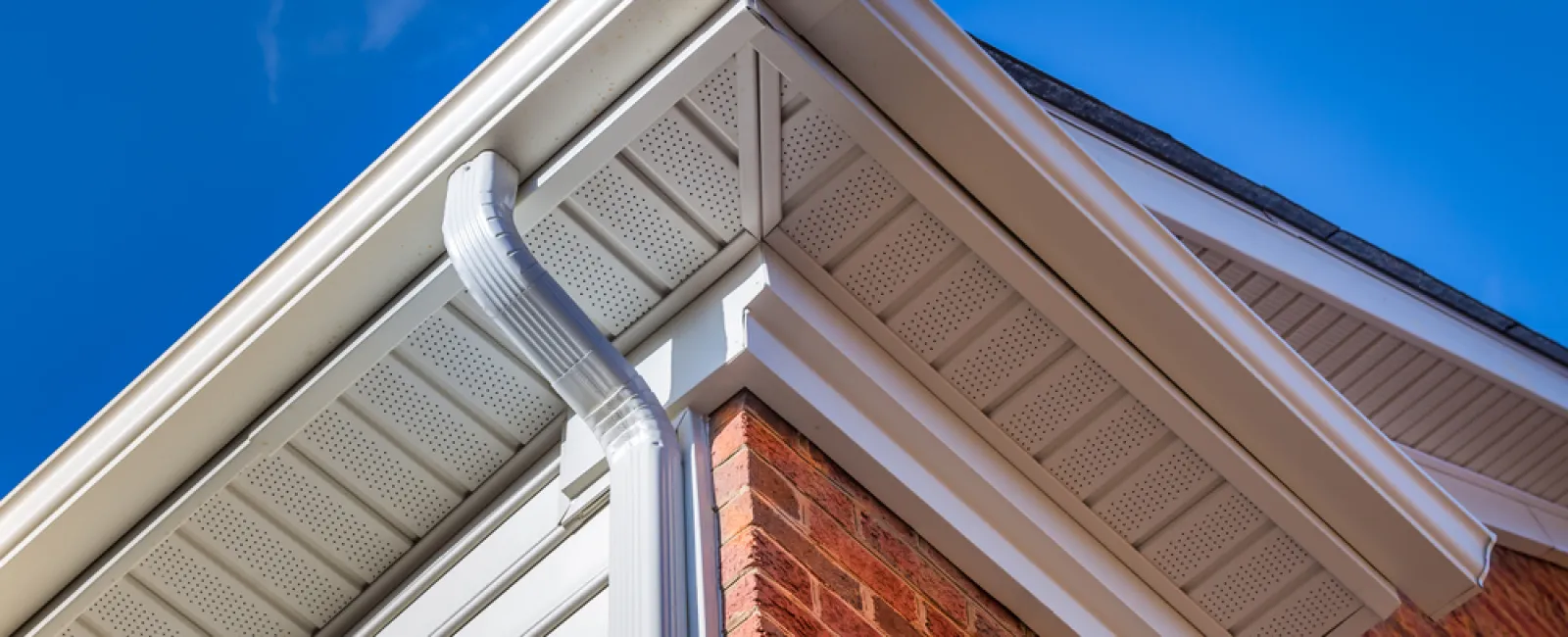Eaves and soffits on building exteriors are commonly confused. In simple terms, the eave is the whole overhanging part of the roof, while the soffit is only the underside part of the eave.
If you're about to get any roofing services done, it's good to know more details about eaves and soffits, including their functions, the materials they're made of, their locations, and their different types.
What Are Roof Eaves?
Eaves are the lower portion of the roof's overhang, where the roof extends beyond the home's exterior walls. When the end of the rafters extends past the side of the roof, an eave is formed.
Eaves protect against water damage, but they can also serve a decorative purpose.
The soffit and fascia boards make up the eave. The fascia boards protect the gutter system on the edge of the roof, while the soffit covers the underside of the eave.
Depending on your roof pitch and style, your home may have wide eaves or narrow eaves. In hot climates, wider eaves provide shade to keep a home cool, but they can also protect from elements like snow and wind.
Types of Eaves

Exposed eaves: The rafters and the bottom of the roof can be seen from underneath.
Boxed-in eaves: The overhang is enclosed by boards or ornamental moldings, so the rafters are not visible.
Closed eave: The bottom tip of the eave connects to the building's side at a 90-degree angle, and the soffit closes the underside of the eaves.
Functions of a House Eave
Protection against moisture and leaks: The extension provided by the eaves keeps rainwater and melting snow away from your home's walls, windows, and foundation.
Temperature control: Eaves control how much sunlight can penetrate your home through your windows. Strategically placed eaves can shade your windows and prevent heat gain in the summer.
What Are Roof Soffits?
While fascia boards are optional, soffits are not. The soffit encloses the underside of your eaves and creates a finished look for your home. It also prevents wind, rain, and snow from entering your attic through the eaves. Vented soffits provide airflow in and out of the attic space to reduce moisture buildup.
Benefits of Installing Soffits
Attic ventilation: Vented soffits improve airflow in the attic, preventing dampness in winter and overheating in the summer. This can help lower energy bills, and it also helps prevent ice dams in freezing temperatures.
Moisture control: Soffit ventilation helps keep moisture from forming beneath your roofline and avoids water damage, mold growth, and wood rot.
Less maintenance: The benefits of soffits reduce the need for moisture-related maintenance such as ice dam removal.
Aesthetic appeal: Soffits give your home a more finished look, and they're available in many colors, styles, and materials to suit your home's design.
Differences Between Eaves & Soffits
Eaves and soffits both form part of your roof's overhang. While they're part of the same structure, their functions and the materials they are made of are different.
Similarities
Eaves literally overlap soffits, and eaves usually create the need for soffits. If you have an exposed eave, you should consider installing a soffit to protect your home.
Eaves are normally made of wood beams and covered with roofing material, and soffits usually coordinate with the siding or fascia materials. Options include wood, aluminum, vinyl, uPVC, composite, and fiber cement.

Differences between material options:
Wooden eaves and soffits can be attractive, but they have a risk of rotting.
Aluminum is durable but prone to heat absorption.
Vinyl soffits are cheap and durable, but the underneath area may not be the same color as the rest of the eave because vinyl is prone to discoloration.
Composite is the most aesthetically pleasing and durable, but it is the most expensive option.
Differences
Function: Soffits and eaves serve different purposes. Eaves protect the building from water, allowing it to run off away from the outside wall. They also provide shade. Soffits, on the other hand, protect the rafters from pests and provide ventilation if needed. Both eaves and soffits can add aesthetic appeal to the edges of your roof.
Types: There are three main types of eaves: exposed eaves, boxed-in eaves, and closed eaves.
Location: Eaves are on the lower edges of the roof, extending beyond the walls. Soffits are the underside of those extended eaves.
Residential Roofing Services in Manchester, NH & North Shore, MA Area
Master Roofers has been providing comprehensive residential roofing services in Manchester, NH, and the North Shore, MA, area for over 80 years. Our certified contractors are familiar with a variety of roofing materials and offer emergency repairs, winter services, attic ventilation, and more. When you need roofing services in Manchester, NH and North Shore Massachusetts, look no further than Master Roofers.
Contact us for a free consultation and estimate today.

